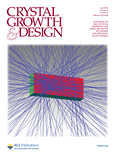
CRYSTAL GROWTH & DESIGN
Scope & Guideline
Exploring the Frontiers of Crystal Science
Introduction
Aims and Scopes
- Crystal Synthesis and Growth Mechanisms:
Investigating various methods for synthesizing crystals, including solution growth, vapor deposition, and mechanochemical approaches. The journal explores the underlying mechanisms that govern the growth and morphology of crystals. - Characterization Techniques:
Employing advanced techniques such as X-ray diffraction, electron microscopy, and spectroscopy to analyze the structural and physical properties of crystals. This includes understanding their electronic, optical, and magnetic properties. - Material Design and Applications:
Focusing on the design of new materials with tailored properties for specific applications, such as drug delivery systems, catalysts, and electronic devices. The journal emphasizes the relationship between crystal structure and functionality. - Polymorphism and Cocrystallization:
Examining the phenomenon of polymorphism in pharmaceuticals and other materials, including the effects of additives and solvents on crystal formation. This area also covers the development and characterization of cocrystals. - Computational Modeling and Simulation:
Utilizing computational methods to predict crystal structures, growth behaviors, and thermodynamic properties. This includes machine learning approaches for screening potential cocrystal candidates.
Trending and Emerging
- Machine Learning and AI in Crystal Design:
The integration of machine learning and artificial intelligence in predicting crystal structures and optimizing growth conditions has gained traction. This trend signifies a shift towards data-driven approaches in materials science. - Sustainable and Green Chemistry Approaches:
There is a growing emphasis on environmentally friendly methods for crystal growth and synthesis, including the use of green solvents and mechanochemical processes. Researchers are increasingly prioritizing sustainability in their methodologies. - Nanostructured and Hybrid Materials:
The research focus is shifting towards the development of nanostructured materials and hybrid systems that exhibit unique optical, electronic, and catalytic properties. This includes the exploration of nanoscale interactions and their implications for device performance. - Cocrystal Engineering for Pharmaceutical Applications:
The trend in cocrystal engineering, particularly for enhancing the solubility and bioavailability of pharmaceutical compounds, is on the rise. This reflects an increasing interest in tailored drug delivery systems. - Multifunctional Materials and Applications:
Emerging research is focusing on multifunctional materials that combine various properties for applications in sensors, catalysts, and energy storage systems. The versatility of these materials is becoming a significant area of interest.
Declining or Waning
- Traditional Crystal Growth Techniques:
There has been a noticeable decline in studies focused solely on traditional crystal growth methods without consideration of new materials or advanced techniques. Researchers are increasingly interested in innovative approaches and hybrid methods. - Basic Theoretical Models of Crystallization:
Research that relies heavily on basic theoretical models without integrating advanced computational simulations or real-world applications is becoming less common. The field is moving towards more application-oriented studies. - Single-Component Crystal Studies:
The focus on single-component crystal studies has decreased as researchers shift toward multicomponent systems and the exploration of complex interactions within cocrystals and metal-organic frameworks.
Similar Journals
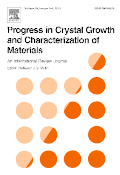
PROGRESS IN CRYSTAL GROWTH AND CHARACTERIZATION OF MATERIALS
Transforming Materials Science Through Rigorous InquiryPROGRESS IN CRYSTAL GROWTH AND CHARACTERIZATION OF MATERIALS, published by Pergamon-Elsevier Science Ltd, is a premier journal dedicated to the advancement of knowledge in the fields of condensed matter physics and materials science. With an ISSN of 0960-8974 and an E-ISSN of 1878-4208, this esteemed journal has been at the forefront of research since its inception in 1990 and continues to publish cutting-edge findings until 2024. Recognized as Q1 in Condensed Matter Physics and Q2 in Materials Science (miscellaneous) as of 2023, it holds impressive Scopus rankings, placing it in the 89th and 81st percentiles of its respective categories. The journal aims to foster innovation and facilitate the exchange of ideas among researchers and professionals by showcasing significant developments in crystal growth and material characterization methodologies. Although it currently does not offer open access, the journal remains a vital resource for academia, providing comprehensive insights that drive forward the fields of physics and materials science, thereby benefiting both seasoned researchers and students alike.

CRYSTENGCOMM
Driving excellence in crystallization and materials science research.CRYSTENGCOMM is a distinguished journal published by the Royal Society of Chemistry, dedicated to advancing the field of crystallization and crystal engineering. With its impact factor consistently among the top tier in its category, CRYSTENGCOMM serves as an essential platform for researchers, professionals, and students in Chemistry, Condensed Matter Physics, and Materials Science. The journal has successfully maintained its relevance and influence since its inception, showcasing pioneering research from 1999 to 2024, with a commendable Q2 ranking in the latest evaluations. This accessibility to crucial developments in crystallization facilitates knowledge transfer across disciplines and enhances collaboration within the scientific community. Although it operates under a subscription model, the journal remains committed to disseminating cutting-edge research and fostering innovation in the field. For more information or to submit your research, please visit the Royal Society of Chemistry's website.
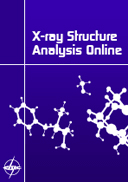
X-Ray Structure Analysis Online
Unlocking the Secrets of Material StructuresX-Ray Structure Analysis Online is a pivotal academic journal dedicated to the field of analytical and materials chemistry, published by the Japan Society for Analytical Chemistry. Established in 2009, this journal serves as a vital platform for researchers and professionals dedicated to advancing the understanding of X-ray structural analysis techniques and their applications. With ISSN 1883-3578, it operates under rigorous peer-review standards, promoting high-quality research contributions. While the journal is currently categorized in the Q4 quartile for both Analytical Chemistry and Materials Chemistry, its focus on cultivating a deeper understanding of material properties through X-ray analysis remains crucial for ongoing developments in these fields. By providing an accessible outlet for innovative studies, X-Ray Structure Analysis Online supports the academic community in overcoming the challenges of a rapidly evolving scientific landscape. It is particularly valuable for those engaged in material and analytical research, offering insights that contribute to both theoretical foundations and practical applications.
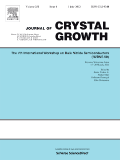
JOURNAL OF CRYSTAL GROWTH
Building Foundations for Future Crystallization TechniquesJOURNAL OF CRYSTAL GROWTH, published by Elsevier, stands as a vital platform in the realm of condensed matter physics, inorganic chemistry, and materials chemistry. With its inception dating back to 1967 and a promising convergence continuing through 2024, this journal encompasses the latest research and advancements in crystal growth phenomena. Although it does not currently offer open access options, its rigorous peer-review process ensures high-quality scholarly contributions that are essential for researchers, professionals, and students alike. The journal's solid standing is reflected in its Scopus rankings, with placements in the third and second quartiles across relevant fields and notable percentiles. Operating from the heart of the Netherlands, JOURNAL OF CRYSTAL GROWTH not only fosters academic dialogue but also enhances the understanding of crystallization processes crucial for materials engineering and applied sciences, making it an indispensable resource for anyone dedicated to exploring the intricacies of crystal growth.

PHYSICS AND CHEMISTRY OF MINERALS
Exploring the Foundations of Geochemical InnovationPHYSICS AND CHEMISTRY OF MINERALS, published by SPRINGER, is a premier journal dedicated to advancing the understanding of the physical and chemical properties of minerals, their interactions, and their significance in various geological processes. With an ISSN of 0342-1791 and an E-ISSN of 1432-2021, this journal serves as a vital resource for researchers and professionals in geochemistry and petrology, as well as materials science. Reflecting the journal's commitment to quality scholarship, it has achieved Q3 rankings in both Geochemistry and Petrology, and Materials Science (miscellaneous) categories. Established in 1977 and continuing through 2024, the journal has consistently provided a platform for high-impact research, fostering collaboration and innovation in the field. Located in Germany and reaching a global audience, PHYSICS AND CHEMISTRY OF MINERALS is instrumental for students, academics, and industry experts looking to stay at the forefront of mineral research and applications.

SEMICONDUCTORS
Fostering breakthroughs in semiconductor technology.SEMICONDUCTORS, published by PLEIADES PUBLISHING INC, is a prominent journal that provides a platform for researchers and professionals in the fields of Atomic and Molecular Physics, Condensed Matter Physics, and Electronic, Optical and Magnetic Materials. With an ISSN of 1063-7826 and an E-ISSN of 1090-6479, the journal has been diligently disseminating knowledge since its inception in 1996 and continues to pave the way for innovative research until 2024. Although currently unclassified in the Open Access model, its influence is underscored by its rankings in Scopus, where it ranks in the 21st-22nd percentile across critical scientific categories. SEMICONDUCTORS serves as an essential resource for cutting-edge research, fostering a greater understanding of semiconductor materials and their applications, thereby assisting the scientific community in pushing the boundaries of technology and innovation.

CRYSTALLOGRAPHY REPORTS
Fostering Insights in Chemistry and PhysicsCRYSTALLOGRAPHY REPORTS (ISSN: 1063-7745, E-ISSN: 1562-689X), published by PLEIADES PUBLISHING INC, is a pivotal journal in the fields of chemistry, condensed matter physics, and materials science. Established in 1996 and continuing through to 2024, it serves as a vital resource for researchers and professionals seeking to disseminate and engage with contemporary advancements in crystallography. While currently not classified as open access, the journal's rigorous peer-review process ensures the publication of high-quality research, making it a respected entity within the academic community. With a categorization in the Q4 quartile for its respective fields and notable Scopus rankings, CRYSTALLOGRAPHY REPORTS is committed to fostering an understanding of crystallographic techniques and their application across scientific disciplines. This journal is essential for those looking to stay abreast of the latest findings and methodologies in crystallography, providing a platform for impactful discussions and collaborations.
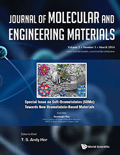
Journal of Molecular and Engineering Materials
Pioneering Insights in Molecular Engineering and Material ScienceThe Journal of Molecular and Engineering Materials, published by World Scientific Publishing Co Pte Ltd, is a leading peer-reviewed journal that focuses on the intricate relationship between molecular science and engineering practices. With the ISSN 2251-2373 and E-ISSN 2251-2381, this journal aims to foster the exchange of cutting-edge research and developments within the fields of materials science, molecular engineering, and related applications. Although the journal currently does not operate under an Open Access model, it remains a vital resource for researchers, professionals, and students seeking in-depth knowledge and innovative methodologies in material design and engineering. The journal's esteemed reputation is reflected in its commitment to publishing high-quality research that addresses contemporary challenges and opportunities in material science, thereby contributing to advancements in technology and industry.
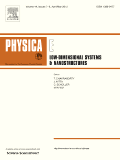
PHYSICA E-LOW-DIMENSIONAL SYSTEMS & NANOSTRUCTURES
Advancing the frontiers of nanoscience and condensed matter.PHYSICA E-LOW-DIMENSIONAL SYSTEMS & NANOSTRUCTURES, published by ELSEVIER, is a premier journal dedicated to advancing the field of condensed matter and nanoscience, focusing on the innovative properties and applications of low-dimensional systems. With an esteemed Q2 ranking in multiple categories including Atomic and Molecular Physics, Condensed Matter Physics, and Nanoscience for 2023, this journal serves as a vital platform for researchers and professionals aiming to disseminate and discuss cutting-edge research. Established in 1974 and converging its focus from 1997 onwards, PHYSICA E captures the evolving landscape of material science, making it a crucial resource for anyone invested in the dynamics of electronic, optical, and magnetic materials. Although the journal operates on a subscription basis, its broad accessibility and significant placement within Scopus rankings—such as being in the 83rd percentile for Condensed Matter Physics—underscore its importance within the academic community. Researchers and students alike will find this journal a cornerstone for fostering knowledge and collaboration in the fields of nanotechnology and low-dimensional physics.

Acta Crystallographica Section E-Crystallographic Communications
Advancing crystallographic knowledge for a brighter scientific future.Acta Crystallographica Section E-Crystallographic Communications is a premier academic journal dedicated to the field of crystallography, published by the International Union of Crystallography. With an Open Access model established since 2008, this journal fosters the rapid dissemination of significant research findings in crystallographic studies, offering researchers and professionals the ability to freely share and access critical data. The journal is recognized for its contribution to various interdisciplinary categories, achieving notable standings in the 2023 rankings, categorized in the Q3 quartile in Chemistry (miscellaneous) and Materials Science, and the Q4 quartile in Condensed Matter Physics. By bridging the gap between theoretical and practical aspects, Acta Crystallographica Section E serves as a vital resource for those looking to deepen their understanding of crystallographic phenomena and its applications in science and engineering. The journal maintains its commitment to quality and innovation in research, ensuring a vibrant platform for scholarly communication within the scientific community.